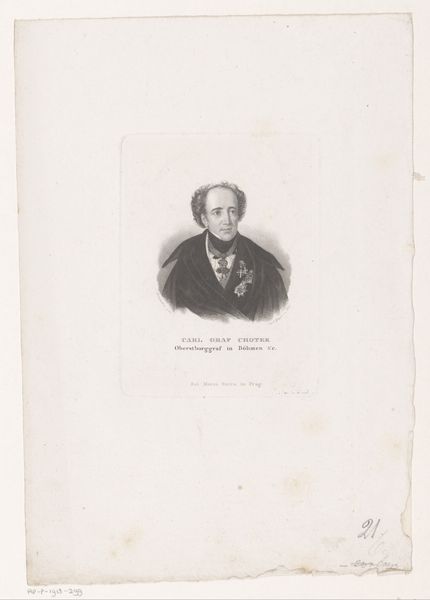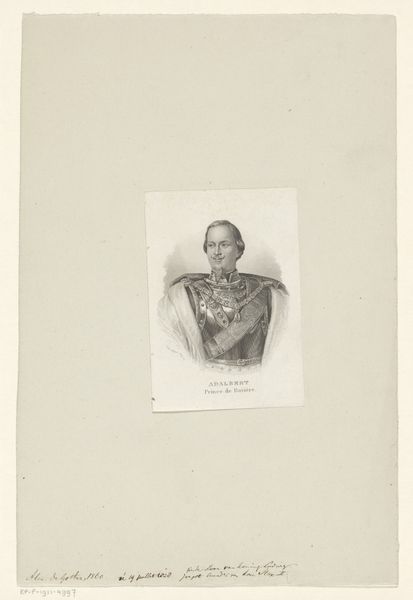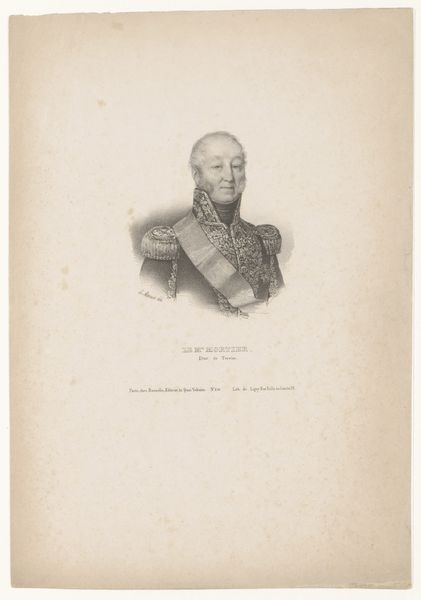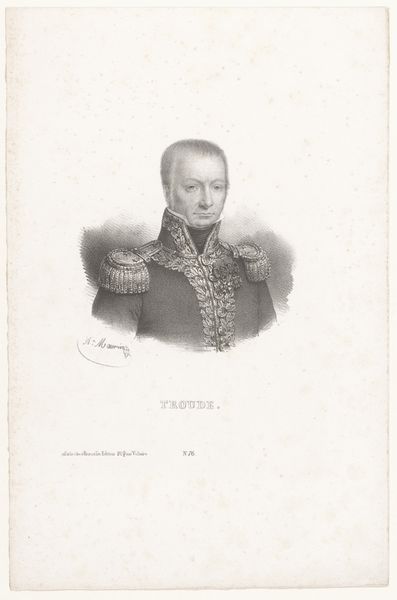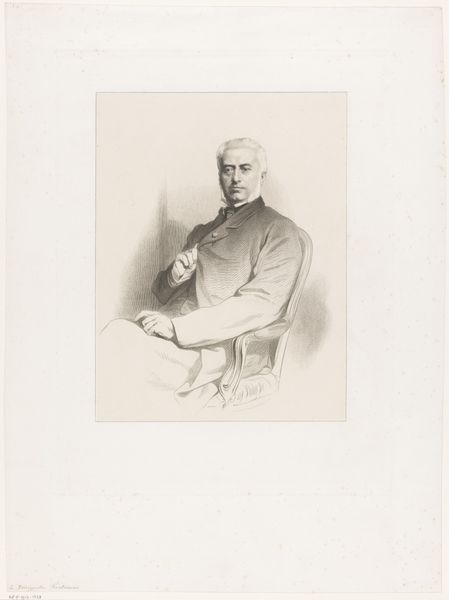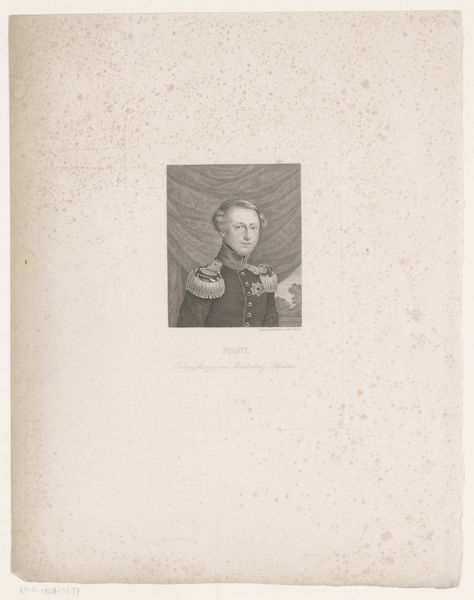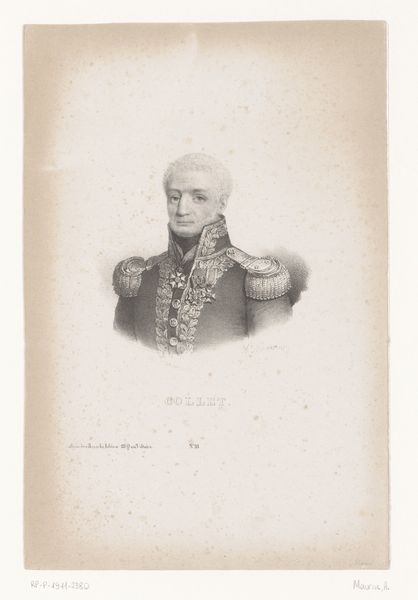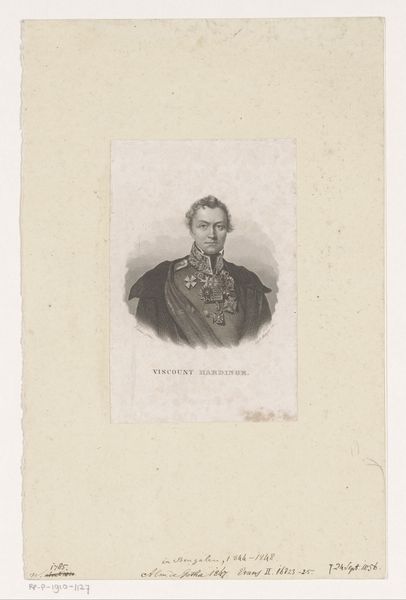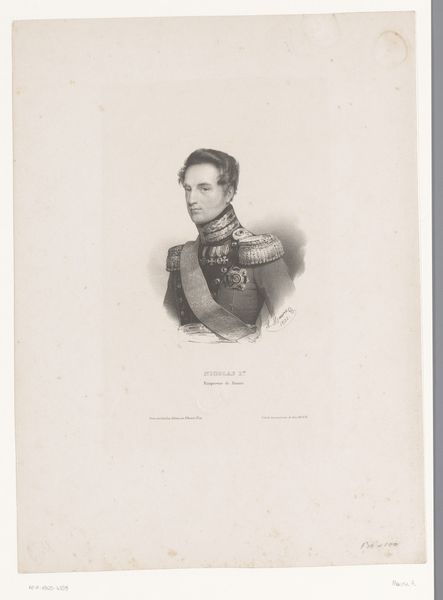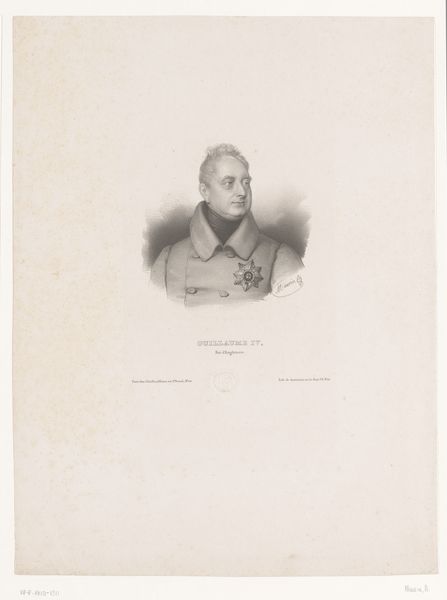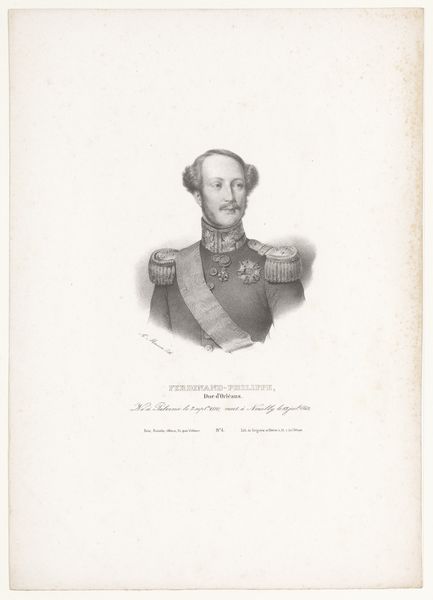
drawing, pencil
#
portrait
#
pencil drawn
#
drawing
#
neoclacissism
#
light pencil work
#
pencil sketch
#
pencil
#
pencil work
#
history-painting
#
realism
Dimensions: height 368 mm, width 277 mm
Copyright: Rijks Museum: Open Domain
This is Antoine Maurin’s lithograph of Franz II, Emperor of Austria, made in the first half of the 19th century. In terms of its wider social and cultural context, this work fits into a long history of portraiture as a tool of statecraft and image-making. Looking at the image, we can see how it creates meaning through visual codes and historical associations. The Emperor is adorned with medals and a fur stole, coded symbols that refer to both the Hapsburg Dynasty and the Austrian Empire. The lithograph medium itself speaks to an interesting institutional history; this method of printmaking allowed for the relatively quick and easy reproduction of images, which meant that portraits of heads of state could circulate widely. To truly understand this image, we can look at the social conditions of its own time; was it self-consciously conservative, or did it critique the institutions of art? The answers can be found in the archives of political and art history. Art is contingent on social and institutional context.
Comments
No comments
Be the first to comment and join the conversation on the ultimate creative platform.
